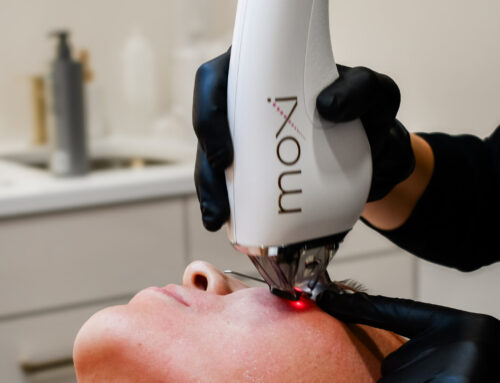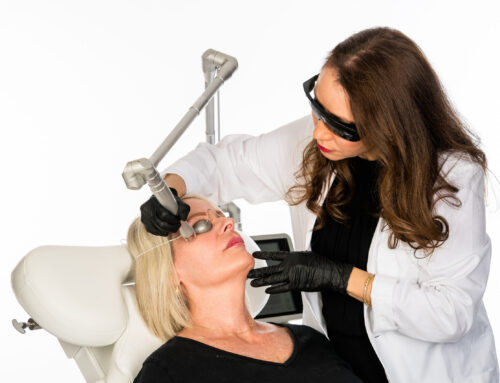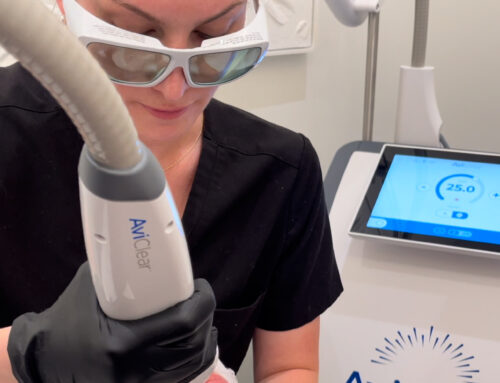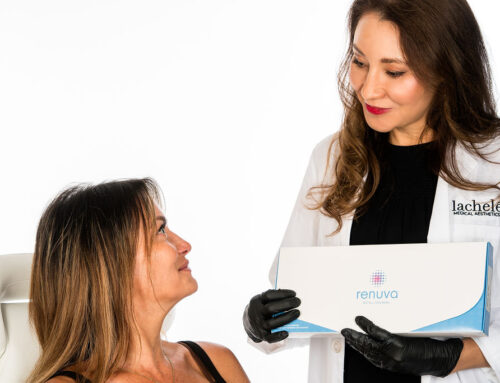By Liz Vokes
The sun is a beautiful source of warmth and light, but its ultraviolet (UV) rays can harm our skin. Many people believe that as long as they avoid sunburn, they are safe from sun damage. Even short periods of sun exposure without burns can cause damage at the cellular level. Those sunburns we proudly wore as badges of honor during childhood may not show effects, such as dark spots or brown spots, until much later. Protecting the outer layer of your skin is crucial as it prevents damage at the DNA level. The less DNA cellular damage, the healthier your skin will look in the long run.
Sunblock, also known as sunscreen, is a vital tool for safeguarding our skin from the damaging effects of the sun; however, not all SPFs are created equal. In this blog post, we’ll explore some essential tips for choosing and applying the right sunblock for optimal protection. When selecting sunblock, there are a few key factors to consider. First, opt for a broad-spectrum sunscreen that protects against UVA and UVB rays with a minimum SPF of 30, such as La Chele’s BB Cream SPF 44. If you have sensitive skin or specific skin concerns, we carry hypoallergenic and dermatologist-tested SPF’s that are also oil-free such as Elta MD UV Clear.
SPF can be deemed either chemical or physical. Understanding their differences can help you decide based on your skin type, concerns, and personal preferences, which is best.
Let’s break down what makes them different.
Chemical SPFs are what typically come to mind via the names of Banana Boat and Coppertone, but it’s important to note that they may not provide the best sun protection for specific concerns or conditions (nor do they offer medical-grade protection). These chemical formulas absorb UV rays and convert them into heat. This can be problematic for individuals with allergies, sensitive skin, and conditions like melasma or rosacea.
On the other hand, physical sunblocks, also known as mineral sunscreens, create a physical barrier on the skin’s surface to block and reflect UV rays without heat absorption. Physical SPFs typically contain active ingredients like zinc oxide or titanium dioxide, which reflect the sun’s rays away from the skin and start to work immediately after application. Earlier versions of physical sunblocks were known for leaving a visible white cast on the skin. However, Elta MD and La Chele’s BB Cream offer advanced formulations that blend seamlessly into the skin, with tinted and non-tinted versions, providing a more cosmetically elegant experience.
Sunblock is a non-negotiable part of a healthy skincare routine for ALL skin types. By incorporating regular application into your daily routine via Colorscience Touch up powder on-the-go, or a tinted moisturizer like Elta MD Daily Sunscreen, you can shield your skin from harmful UV rays and maintain a healthy and radiant complexion. (It’s important to note that regardless of whether you choose a chemical or physical sunscreen, both types need to be applied generously and reapplied regularly to maintain their effectiveness.)
Call La Chelé to schedule your complimentary appointment with a Medical Aesthetician for a sunscreen and product refresher consultation at 215-862-6100!






